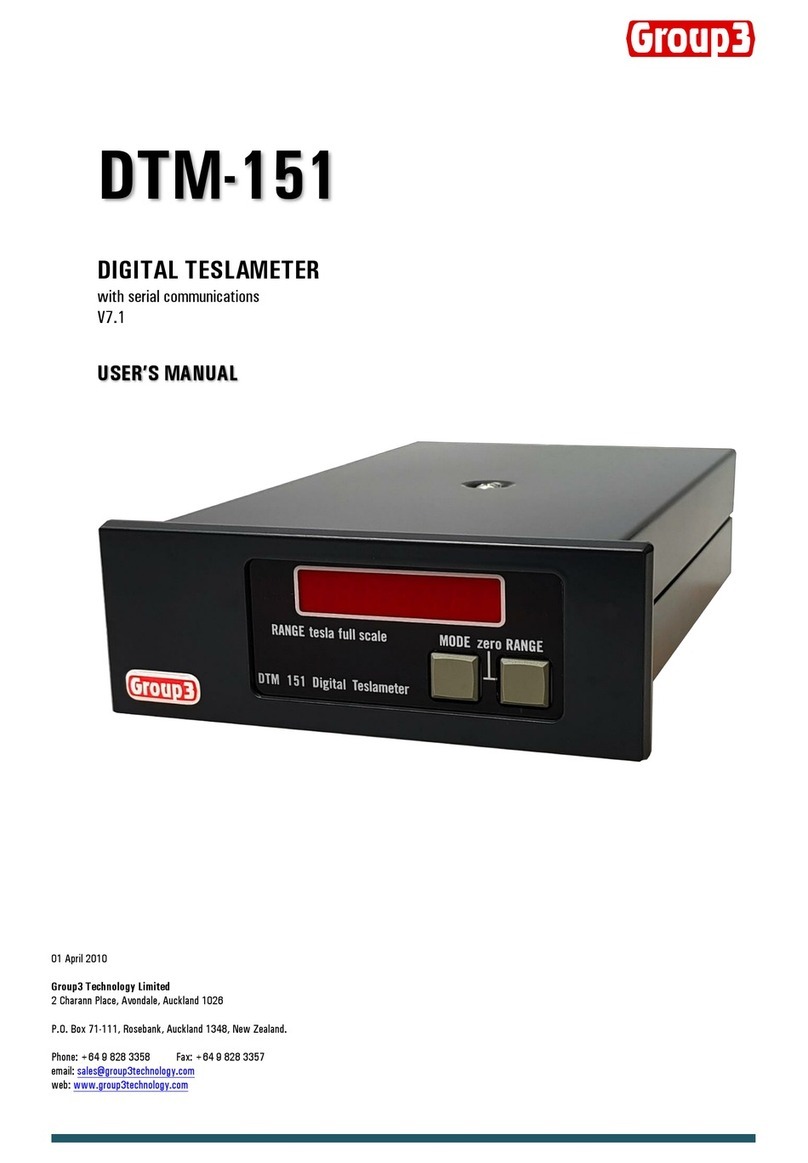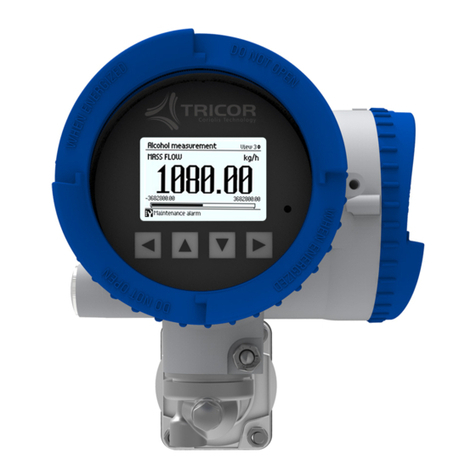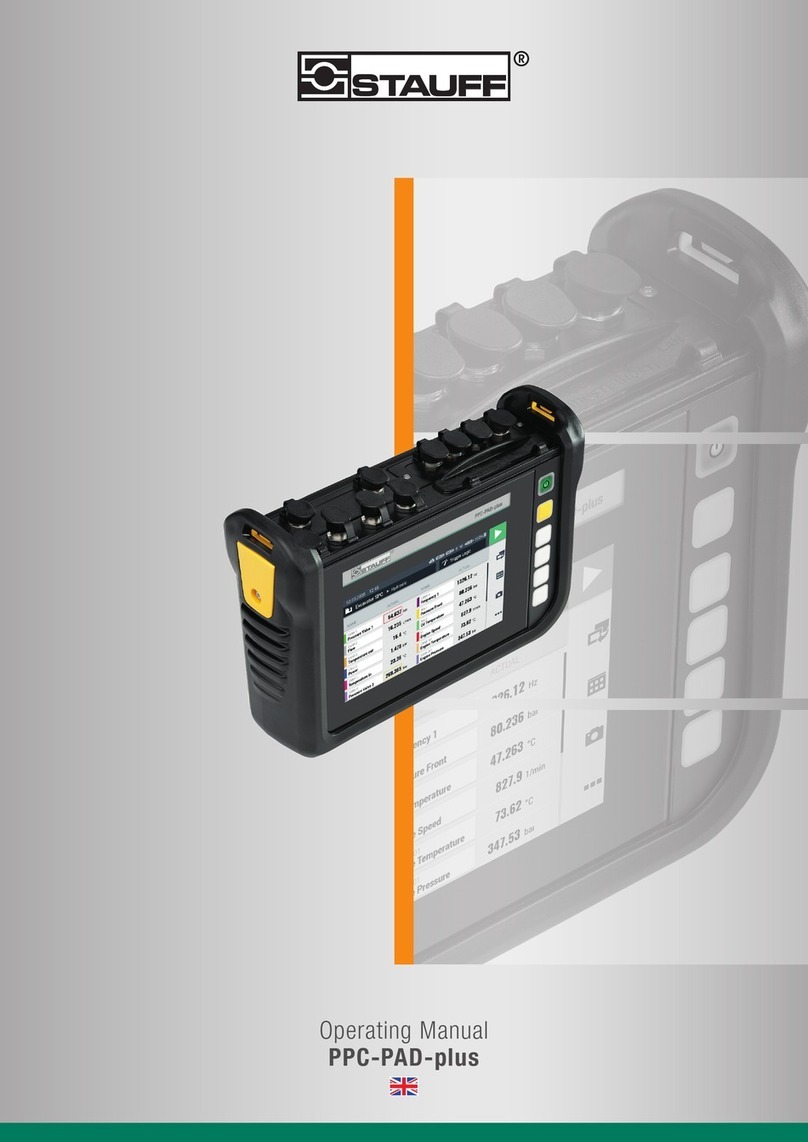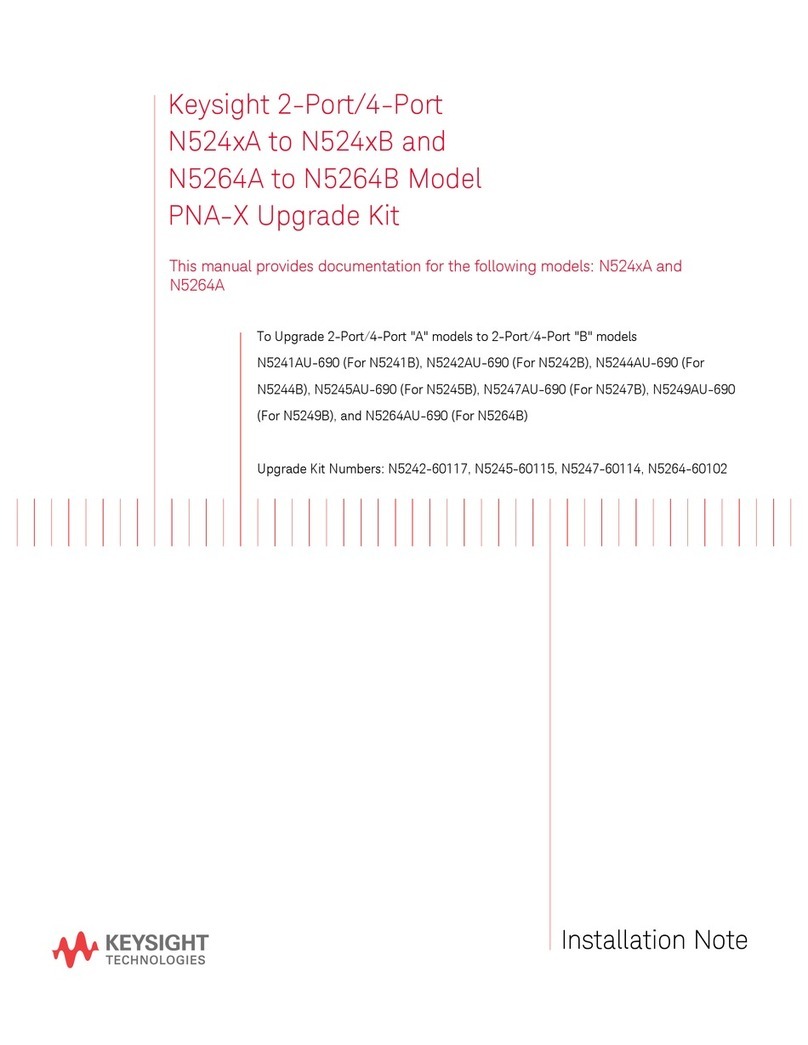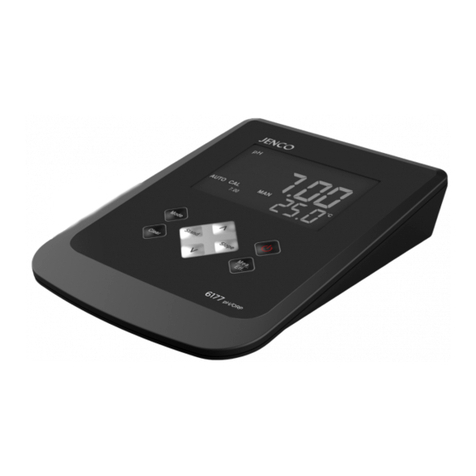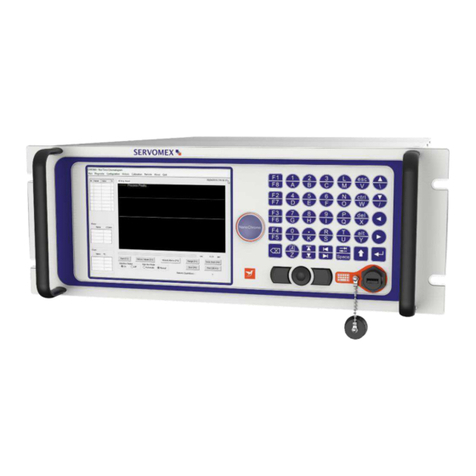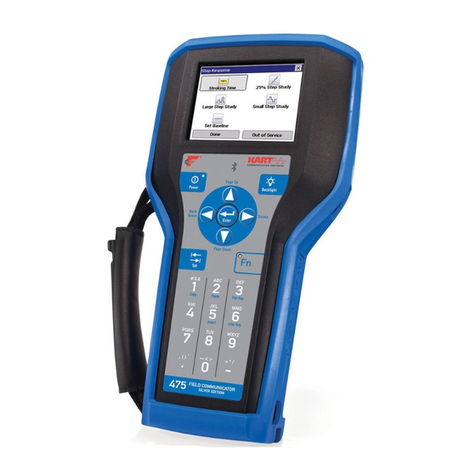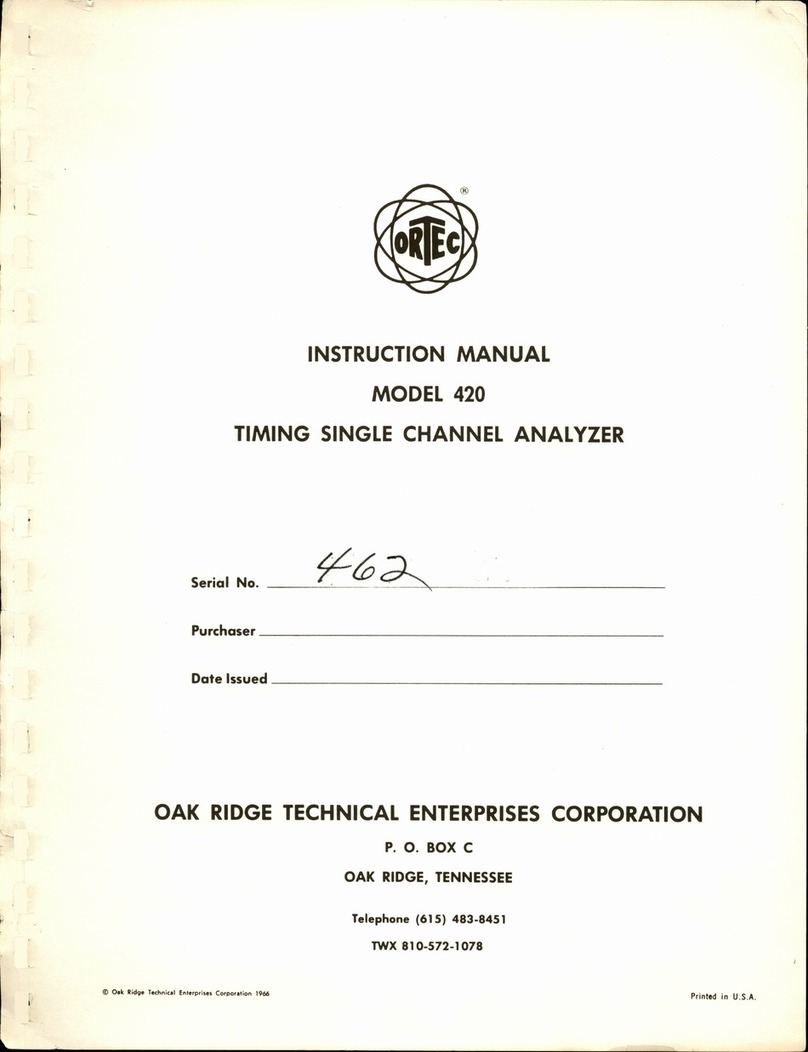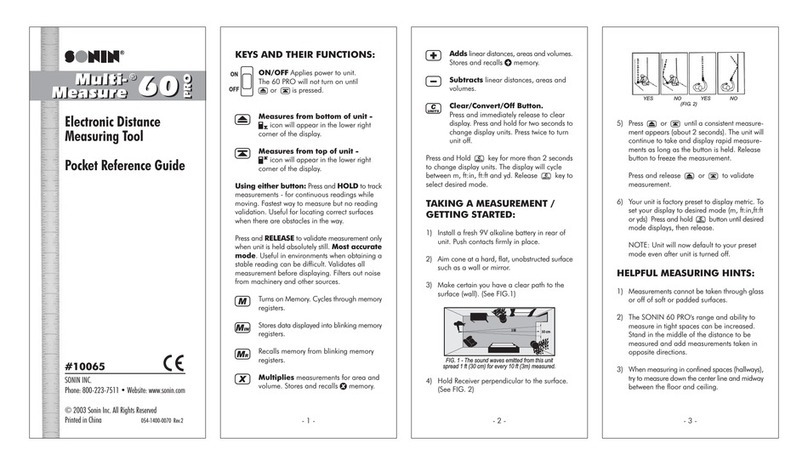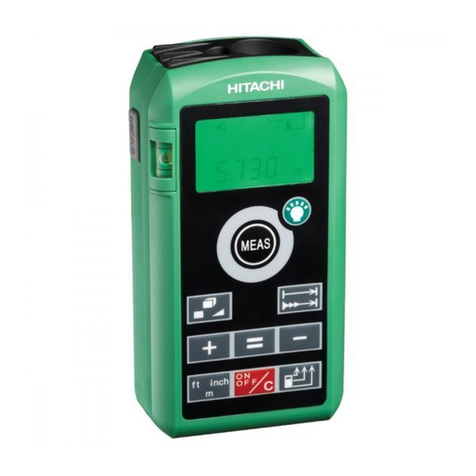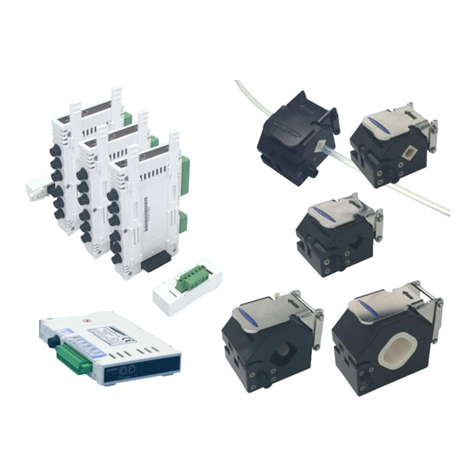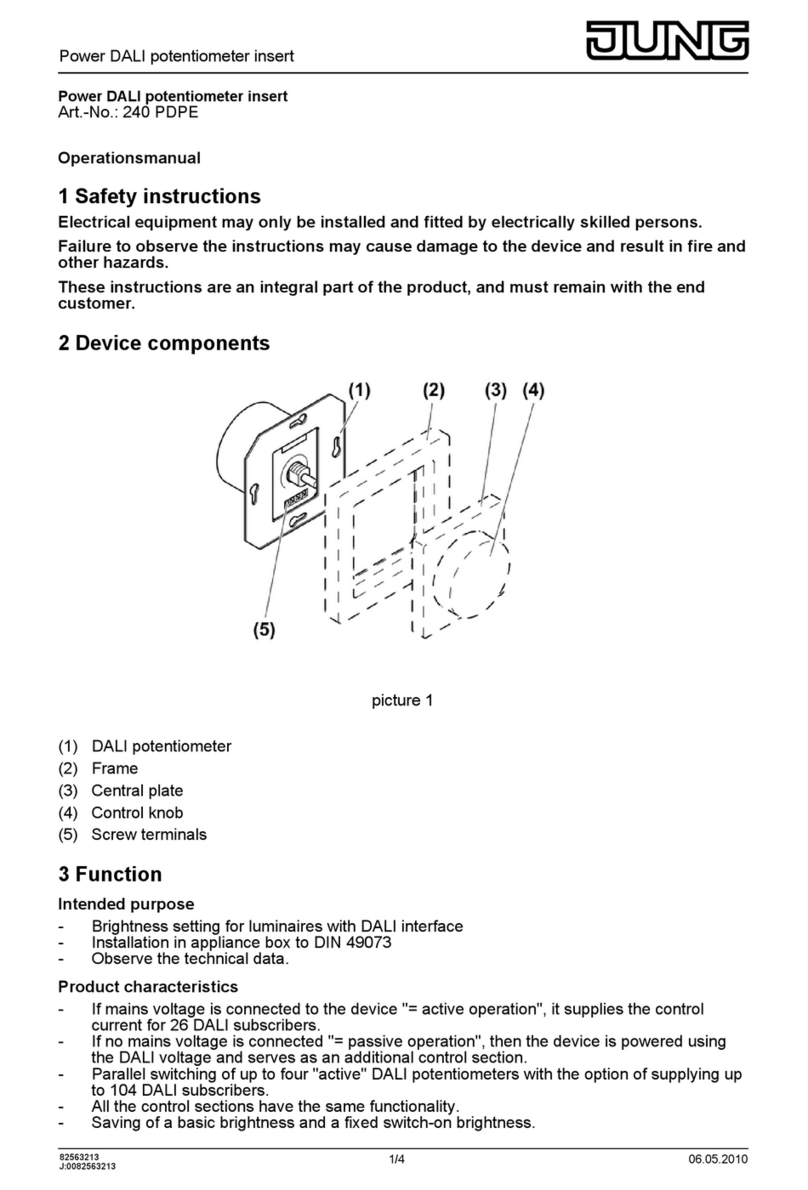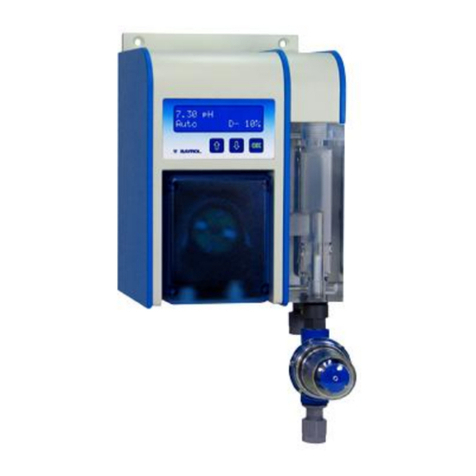GREEN INSTRUMENTS G3620A User manual

PART NUMBER.: 01760
G3620A/P STACK GAS
OXYGEN ANALYZING SYSTEM

2

G3620a/p Stack Gas Oxygen Analyzing System
3
Contents
G3620A/P STACK GAS OXYGEN ANALYZING SYSTEM 1
1INTRODUCTION 4
1.1 ABOUT THIS MANUAL 4
1.2 INQUIRIES AND FEEDBACK 5
1.3 ABOUT THE SYSTEM 6
2SPECIFICATIONS 7
3INSTALLATION 8
3.1 CONTROLAT DELIVERY 8
3.2 WHERE TO INSTALL THE SYSTEM 8
3.3 SAFETY ASPECTS 11
3.4 EJECTOR PROBE 11
3.5 ANALYZING BOARD 13
3.5.1 Air supply connection 13
3.5.2 Test gas connection 13
3.5.3 Analyzer and Electrical Connection 13
4COMMISSIONING 18
4.1 INSTALLATIONAND SETUP PRE-CHECKS 18
4.2 START OF SYSTEM 18
5ROUTINE MAINTENANCE 19
5.1 CALIBRATION 19
5.2 AIR FLOW SYSTEM 19
5.3 EJECTOR PROBE 19
5.4 SENSOR 20
6SPARE PARTS 21
List of Figures
FIGURE 3-1: INSTALLATION LAYOUT OF THE G3620A WITH G36A STAND-ALONE ANALYZER ..................... 9
FIGURE 3-2: INSTALLATION LAYOUT OF THE G3620P WITH G36P PANEL MOUNTED ANALYZER............... 10
FIGURE 3-3: O2EJECTOR PROBE STANDARD ..................................................................................... 12
FIGURE 3-4: O2EJECTOR PROBE SHORT........................................................................................... 12
FIGURE 3-5:ANALYZING BOARD WITH G36A OXYGEN ANALYZER MOUNTED ON BOARD........................... 14
FIGURE 3-6: PIPINGAND CONNECTION DIAGRAM OF THE G3620A....................................................... 15
FIGURE 3-7:ANALYZING BOARD WITH CONNECTOR BOX FOR G36P OXYGEN ANALYZER......................... 16
FIGURE 3-8: PIPINGAND CONNECTION DIAGRAM OF THE G3620P....................................................... 17

Introduction
4
1Introduction
1.1 About this Manual
The G3620a/p Stack Gas Oxygen Analyzing System, hereafter named a SGOA System,
consists of an oxygen analyzer, a sampling board, and a probe.
This manual contains data and instructions for the installation, operation, and mainte-
nance of the sampling board and the SGOASystem as a whole.
The instructions for installation, operation, and maintenance of the analyzers are provid-
ed in separate manuals:
The G36a Oxygen Analyzer manual (part no. 01245) –IP67 box
The G36p Oxygen Analyzer manual (part no. 01381) –panel mounted
Therefore, for the installation, operation, and maintenance of an entire SGOA System,
this manual and the concerned oxygen analyzer manual must be read carefully in their
entirety.
The instructions & figures have been made in general terms and do not take into
consideration specific installations. The figures used in the manual are only for general
illustration purposes. The manual is designed for the standard G3620a/p SGOA System.
This manual does not describe all possible situations but only the most common and
known situations and cannot replace the necessary instruction and education of the per-
sonnel. Should situations not described in this manual occur which cannot be solved in
accordance with normal known practice and good workmanship, the operator should con-
tact Green Instruments A/S for instructions.
Attention
Before operation read all instructions and warnings within this manual and
associated documentation. Improper use may cause personal injury and/or damage
of equipment and may void the warranty. Green Instruments A/S disclaims any
responsibility for damage and/or injury caused by improper installation, use or
maintenance of the equipment.

G3620a/p Stack Gas Oxygen Analyzing System
5
This manual does not claim to cover all details or variations in the equipment or to
provide for every possible contingency that may arise during installation, operation, or
maintenance.
Green Instruments A/S reserves the right to minor alterations and improvements owing to
developments without being obliged to enter the corresponding changes in this manual.
Green Instruments A/S reserves the copyright of the manual. Without prior written per-
mission of Green Instruments A/S, the manual may not be copied and given to unauthor-
ized people.
1.2 Inquiries and Feedback
All claims and inquiries for spares shall be addressed to Green Instruments A/S or our
distributors.
In all correspondence or when ordering spare parts, please carefully state the equipment
type and serial number, which you can find on the label on the back of the G36p Oxygen
Analyzer or on the right side of the G36a Oxygen Analyzer.
Green Instruments A/S appreciates all feedback and suggestions for improvement of this
manual. If you have any questions or find any errors in the manual, you are welcome to
contact us at the following address:
Green Instruments A/S
Erhvervsparken 29
DK-9700 Brønderslev
Denmark
Phone:
Fax:
+45 9645 4500
+45 9645 4501
E-mail:
Web:
service@greeninstruments.com
HUwww.greeninstruments.com

Introduction
6
1.3 About the System
The G3620a/p SGOA System is designed to measure the content of oxygen in stack gas.
The compact design provides a wide range of configuration possibilities, outstanding per-
formance, reliable and in-situ real-time monitoring.
The system consists of the following main elements:
Ejector probe complete with filter, sampling tube, sensor, and housing.
Umbilical cord including cables and tubing.
Analyzing board, air supply filter regulator, test gas inlet, and flow meters.
Analyzer (G36a or G36p panel mounted).
The system has MED EC type examination by Det Norske Veritas, Lloyd’s Register Type
Approval Certificate, and Det Norske Veritas Type Approval Certificate.

G3620a/p Stack Gas Oxygen Analyzing System
7
2Specifications
Gas Connection
Test gas inlet
Max. 1 bar –quick coupling for 6 mm OD hose
Air supply inlet
Max. 10 bar –1/8” BSP connection
Air supply quality
Instrument air according to ISO 8573-1 Class 3.3.3
Sampling Board
Ambient Temperature
0oC…55oC
Sampling board dimension
600 × 290 × 130 mm (H × W × D)
Weight –incl. G36a O2 Analyzer
Approx. 6.0 kg without packaging
Weight –incl. G36p O2Analyzer
Approx. 4.0 kg without packaging
Ejector Probe
Sensor technology
Heated zirconia type sensor
Measurement range
0.0…21.0% (selectable range)
Sample temperature
0oC…+500oC
Probe insert length
243…337 mm for duct diameters 260…2800 mm
Socket
OD: 60 mm L: 200 mm
Connection - ejector air (red)
6/4 mm tubing
Connection - calibration gas (blue)
6/4 mm tubing
Ejector air flow
Approx. 2 l/min at 1 bar
Calibration air flow
Approx. 3 l/min or 1 l more than ejector air flow
Ejector probe dimension –short
285 x 180 x 475 mm (H x W x D)
Ejector probe dimension –long
285 x 180 x 600 mm (H x W x D)
Weight including house
Approx. 6.0 kg without packaging
Umbilical cord
Cord length
3.0 m
Tubing
In 28 mm nylon conduit
Analyzer
See details in chapter 2 in the analyzer manual.
Optional Equipment
Remote digital display with alarm relays, digital flow switch, and visualization, recording, and
data logging.
Specifications are subject to change without notice.

Installation
8
3Installation
Read this chapter in its entirety before installing the system.
3.1 Control at Delivery
When you receive the G3620a/p SGOA System, please inspect and confirm that the re-
ceived scope of supply is in accordance with the packing list and not damaged.
Any discrepancy should be reported to the supplier immediately. If any of the received
parts are damaged, the shipping company should be informed, and new parts should be
made available before completing the installation.
3.2 Where to Install the System
Satisfactory operation, faultless functions, and minimal maintenance of the sampling
board, are achieved by paying attention to the following points:
The sampling board and the analyzer shall be installed in a clean area away from dust,
oil mist, and moisture. The elements of the system should be installed at viewing level
so that it is easily accessible in connection to operation and service.
The probe shall be installed in a suitable location that represents the gas to be tested
and where there is a laminar flow.
The panel mounted analyzer can be installed up to 6 m from the analyzing board.
As standard scope of supply, the sampling board can be installed up to 3 m from the
ejector probe.
It is recommended to place the ejector probe as illustrated in Figure 3-1 below. If you
find it difficult estimating where to install the ejector probe, please contact Green
Instruments A/S for more instructions.

G3620a/p Stack Gas Oxygen Analyzing System
9
Exhaust Duct
Yard Supply
Distance to the next upstream bent:
min. 3 duct diameters
Distance to the engine/turbo charger:
min. 10 duct diamters
Distance to the outlet:
min. 3 duct diamters
Distance to the next downstream bent:
min. 1 duct diameters
Sample to be drawn from the
inner 80% of the duct diameter.
On-Stack
Probe
Umbilical Cord –3.0 m length in 28 mm nylon conduit
Instrument Air
ISO 8573-1 class3
Yard Supply
Power Supply
100-230 VAC
Yard Supply
Signal Cable
Yard Supply
285 mm
600 mm
Maintenance space: 700 mm
Scope of Supply per G3620a Stack Gas O2 Analyzing System
1pc Probe with Sensor
connected with a 3.0 m long umbilical cord to
1pc Sampling Control Board including G36a Oxygen Analyzer
600 × 285 × 180 mm
FlowFlow
Zero Cal. Gas
optional
not required
O2 Analyzer
Figure 3-1: Installation layout of the G3620a with G36a stand-alone analyzer

Installation
10
Exhaust Duct
Yard Supply
Distance to the next upstream bent:
min. 3 duct diameters
Distance to the engine/turbo charger:
min. 10 duct diamters
Distance to the outlet:
min. 3 duct diamters
Distance to the next downstream bent:
min. 1 duct diameters
Sample to be drawn from the
inner 80% of the duct diameter.
On-Stack
Probe
Connection
Box
Umbilical Cord –3.0 m length in 28 mm nylon conduit
Instrument Air
ISO 8573-1 class3
Yard Supply
Power Supply
24 VDC
Yard Supply
Signal Cable
Yard Supply
285 mm
600 mm
Maintenance space: 700 mm
Scope of Supply per G3620p Stack Gas O2 Analyzing System
1pc Probe with Sensor
connected with a 3.0 m long umbilical cord (optional to 6m) to
1pc Sampling Control Board
connected with a 3.0 m long signal cable to
1pc G36p Oxygen Analyzer (to be installed in boiler panel)
600 × 285 × 180 mm
FlowFlow
Zero Cal. Gas
optional
not required
G36p Oxygen Analyzer
Signal Cable standard 3 m & max. 6 m
Length/min. 5x0.34 sqmm shielded
Cable for Solenoid valves
3x1.5 sqmm
600 mm
290 mm
Figure 3-2: Installation layout of the G3620p with G36p panel mounted analyzer

G3620a/p Stack Gas Oxygen Analyzing System
11
3.3 Safety Aspects
Hot sensor/probe!
The sensor and the probe are hot and can cause severe burning of personnel if not han-
dled with care.
Installation and operation!
The installation and operation of the G3620a/p SGOA System and associated equipment
must be carried out by skilled, trained, and certified personnel. Green Instruments A/S
does not take any responsibility for the operation of the system and associated equipment
whatsoever. The successful and safe operation of this equipment is dependent on proper
handling, installation, operation, and maintenance.
Recycling!
Do not dispose any part of the equipment with regular refuse. Disposal should be in ac-
cordance with the requirements of the current statutory regulations.
3.4 Ejector Probe
The sample gas flow is drawn through the sample filter element into the sensor area via a
narrow passage securing quick response time. The probe has a small air operated ejector,
which drives the sample gas past the sensor and back into the stack. The sample gas
velocity and responding time is controlled by the flow of the ejector air.
The gas, which passes the probe, must represent the gas to be tested and extracted from a
location with laminar flow. Holes and leaks in the gas ducting system before and after the
probe may influence the accuracy of the measurement.
The probe shall be placed so that it is protected against mechanical damage. The flue gas
temperature cannot exceed the given temperature limit of the ejector probe.
When welding the mounting socket to the stack, make sure that the back plate of the
probe is mounted with the sampling hose connection facing down and the probe protec-
tion house mounted in a vertical position of the stack. Please see Figure 3-1 and 3-2 for
the installation of the ejector probe.

Installation
12
Figure 3-3: O2ejector probe standard
Figure 3-4: O2ejector probe short

G3620a/p Stack Gas Oxygen Analyzing System
13
3.5 Analyzing Board
The analyzing board is designed for mounting with the G36aOxygen Analyzer or the G36p
Oxygen Analyzer for panel mounting. For the G3620p, the analyzing board is connected
to the panel mounted analyzer by a standard 3 m long signal cable. This signal cable can
be delivered up to 6m as optional.
The analyzing board has two angle iron mounting brackets. The brackets are made of
ordinary mild steel and can be welded or bolted directly to a chosen location structure as
required.
The two mounting brackets are mounted horizontally and parallel with a distance of 577
mm.
When the analyzing board and the ejector probe are installed in appropriate locations, the
instrument air and power can be connected as described below.
3.5.1 Air supply connection
For ejector air, back-flushing, and calibration, instrument air is connected directly to the
air supply filter reduction station. The reduction station consists of a filter and a drain.
The air supply connection to the reduction station is a 1/8” BSP female connection. The
maximum pressure for the air supply inlet is 10 bar.
3.5.2 Test gas connection
For system verification, test gas is connected to the inlet valve. The connection is a quick
coupling for OD 6/4 mm hose. The maximum pressure for the test gas inlet is 1 bar.
3.5.3 Analyzer and Electrical Connection
For the SGOA system installation, the instructions for the electrical connections are
described in the oxygen analyzer manual chapter 3.

Installation
14
Figure 3-5: Analyzing board with G36a Oxygen Analyzer mounted on board

G3620a/p Stack Gas Oxygen Analyzing System
15
Instrument air
Max. 10 bar.
Conn. Female1/8"
Test gas
Max. 1 bar
Conn. OD 6 mm
G36a Analyzer
01243
220V/110V
Power supply
See rating
Cable dia. 11-14 mm
Signal output
4-20 mA
Cable dia. 11-14 mm
F
F
GI Supply
5
5
GI Supply
Umbillical
cord to probe
Board dimensions:
600 × 290 × 138 mm
GI Supply
GI Supply
Figure 3-6: Piping and connection diagram of the G3620a

Installation
16
12
236
12
196
20 27
Air supply Testgas
290
93
600
90
103
42
General tolerances acc. to DIN 7168sg
4/4/2011
PR
1 OF 1
RH 4/4/2011
GI
1:5
permission of Green Instruments A/S
* THIS IS A CAD DRAWING AND MUST NOT BE CORRECTED BY HAND *
Department:
Drawn:
Materiale
Drawing No:
Weight:
Approv: Page
Scale
01614/s
The ownership to and the contents of this document are proctected under Danish Law.
The document or the contents thereof must not be made known, copied or otherwise used without the written
G3620p Stack Gas OAS, 24 VDC
118
577
13
Figure 3-7: Analyzing board with connector box for G36p Oxygen Analyzer

G3620a/p Stack Gas Oxygen Analyzing System
17
Instrument air
Max. 10 bar.
Conn. Female1/8"
Test gas
Max. 1 bar
Conn. OD 6 mm
G36p Panel mounted
analyzer
F
F
GI Supply
5
5
GI Supply
Umbillical
cord to probe
Board dimensions:
600 × 290 × 138 mm
GI Supply
GI Supply
Signal output
4...20 mA
Power Supply
24 V DC
Alarm relays
volt free
GI supply
GI supply
Connection
Box
Figure 3-8: Piping and connection diagram of the G3620p

Commissioning
18
4Commissioning
4.1 Installation and Setup Pre-checks
After completing the installation and before starting the system for the first time, please
check the following:
Check and confirm that all electrical connections are carried out according to the
manual.
Check that the air supply is connected to the air supply filter regulator without leaking
and in accordance with good installation practice.
Check that the probe is installed in a suitable location representing the gas to be tested,
without leaking and in accordance with good installation practice.
Check that the alarms are set to the intended levels. See section 5.2 in the analyzer
manual for the default settings.
Check that the output range is configured according to the description in section 5.4 in
the analyzer manual.
Re-check all connections to make sure there is no air leaking. A leaking connection
will result in loss of air and may result in poor calibration.
4.2 Start of System
Switch the power supply on. During the heating of the sensor, the display will indicate
increasing oxygen content. After 1-2 minutes the oxygen content will start to stabilize.
After approximately 10 minutes, when the sensor has reached its operation tempera-
ture, the oxygen readings are considered stable.
Adjust the air supply pressure at the air supply filter regulator to approx. 1 bar.
Adjust the ejector air flow at the sampling flow meter to approx. 2 l/min for common
conditions. If more suction is needed the ejector air flow can be adjusted.
Adjust the calibration air flow to approx. 3 l/m or 1 l more than the ejector air flow.
Artificial calibration and back-flushing of the filter can now be performed following
the instructions in section 6.2 in the analyzer manual.

G3620a/p Stack Gas Oxygen Analyzing System
19
5Routine Maintenance
Warning
The sensor/probe is hot and can cause severe burning of personnel if not handle with
care.
Turnoff the analyzer before working with the probe and sensor.
Before removing the probe from the stack, make sure that there is no over-pressure or
hot exhaust gas inside the stack.
5.1 Calibration
The system must be calibrated regularly and always after each startup of the oxygen
analyzer. If in continuously operation, experience has shown that one calibration per
week is sufficient. With the default configuration, the analyzer is automatically calibrated
every 6 hours using the artificial calibration. Please see chapter 6 in the analyzer manual
for more information about calibrations.
5.2 Air Flow System
Routine inspection and maintenance of the air flow system and connections is required to
make sure no gas is leaking. It is important that air flow and pressure are stable. Failure
to periodically inspect and maintain the above requirements may lead to imprecise ana-
lyzer readings and malfunctioning of the system.
The maximum allowed pressure for the air supply filter regulator is 10 bar and the tem-
perature is 60oC. Prevent ultraviolet rays and the adhesion of organic solvents to the re-
duction unit. Depressurize the air supply filter regulator station before cleaning and ser-
vicing.
The flow meter and control valve does not require any special maintenance. Dirt and oil
on the surface can be removed carefully using neutral detergent and clean dry rag.
5.3 Ejector Probe
The probe filter is normally cleaned by automatic backflushing. The period between
back-flushing is determined by the setup and should be set and changed according to ac-
tual flue gas condition and how dirty the filter gets. Regular backflushing will normally

Routine Maintenance
20
keep the filter clean. However, slow responds to O2changes in the flue gases indicates
that the probe filter or the probe venturi air nozzle is contaminated. In case of heavy filter
contamination, manual cleaning of the filter and the probe venturi air nozzle will be re-
quired.
When cleaning or changing the probe filter, the probe must be removed from the stack.
The filter element is removed by unscrewing the filter bolt. Before removing the probe
from the stack, please make sure that there is no over-pressure inside the stack.
To clean the ejector probe, start by removing the ejector probe from the stack:
Turn off the analyzer and disconnect the air supply.
Unscrew the nuts and remove the blue cover plate of the ejector probe.
Use a spanner to loosen the sensor. Unplug the sensor and the two sampling tubes.
Remember that the sensor can be extremely hot!
Unbolt the 6 bolts at the bottom of the probe head bottom and pull out the ejector
probe.
Cleaning the probe filter element:
To clean the probe filter element manually, remove the filter element by unscrewing
the filter bolt.
Clean or change the filter.
Cleaning the ejector probe venturi air nozzle:
Unbolt the red bolt on the probe head top and pull the ejector probe venturi air nozzle
out.
Clean the ejector probe venturi air nozzle with pressurized instrument air. The gas ca-
nals in the ejector probe head top can also be cleaned with pressurized instrument air.
5.4 Sensor
To replace the sensor, remove the blue cover plate of the probe. Then remove the sensor
from the probe head following the below steps:
Turn off the analyzer and remove the blue cover plate of the ejector probe
Unplug the sensor connection
Loose the sensor from the probe head by using a spanner, and pull out the sensor plug
Screw a new sensor into the probe and set the sensor plug to the sensor connector.
Then close the cover plate.
This manual suits for next models
1
Table of contents
Other GREEN INSTRUMENTS Measuring Instrument manuals
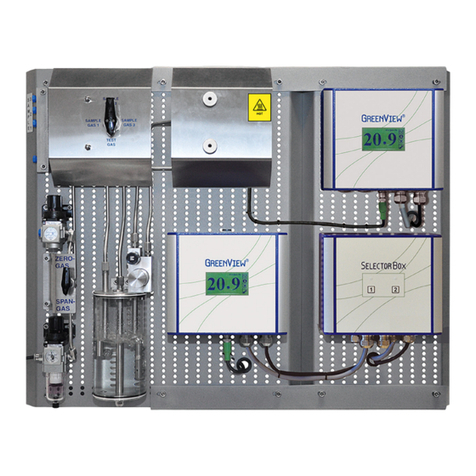
GREEN INSTRUMENTS
GREEN INSTRUMENTS G3600 User manual
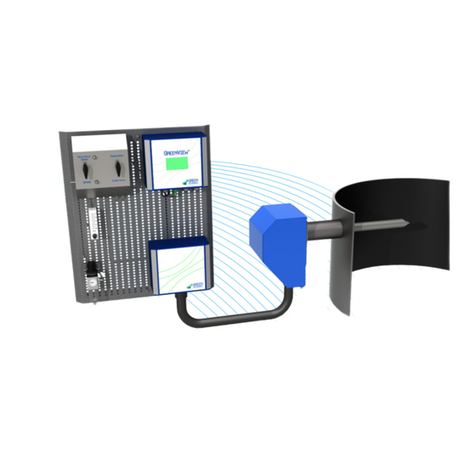
GREEN INSTRUMENTS
GREEN INSTRUMENTS G4130 NOX/O2 User manual
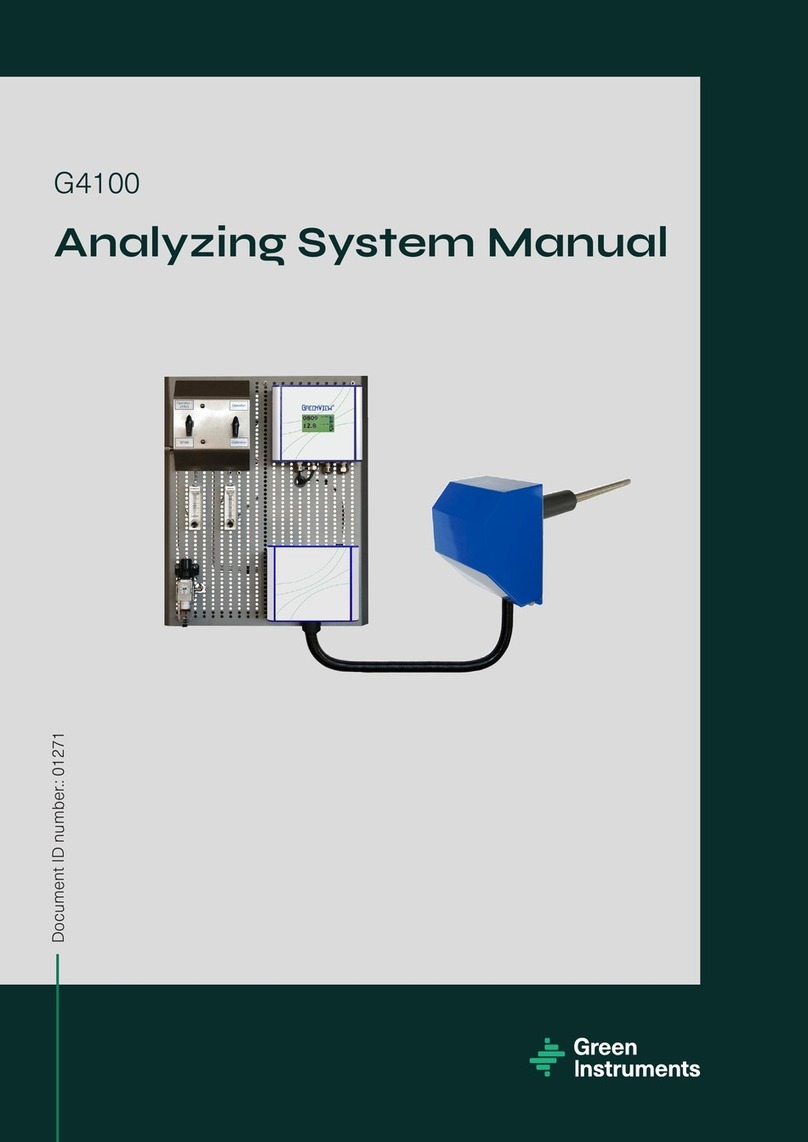
GREEN INSTRUMENTS
GREEN INSTRUMENTS G4100 User manual
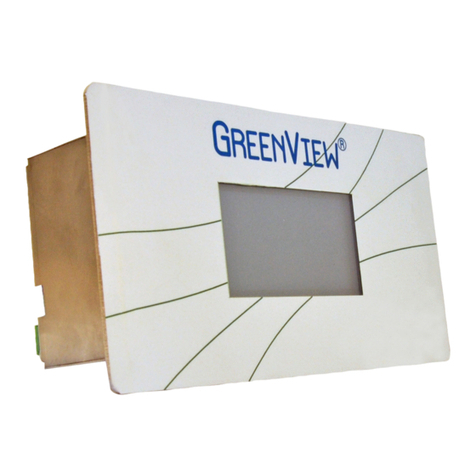
GREEN INSTRUMENTS
GREEN INSTRUMENTS G36p User manual

GREEN INSTRUMENTS
GREEN INSTRUMENTS G4100 User manual
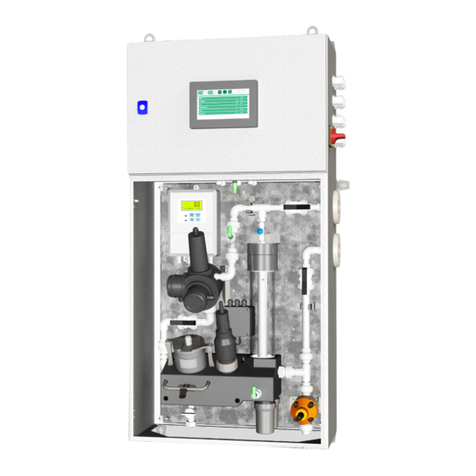
GREEN INSTRUMENTS
GREEN INSTRUMENTS Maritime G6200 User manual
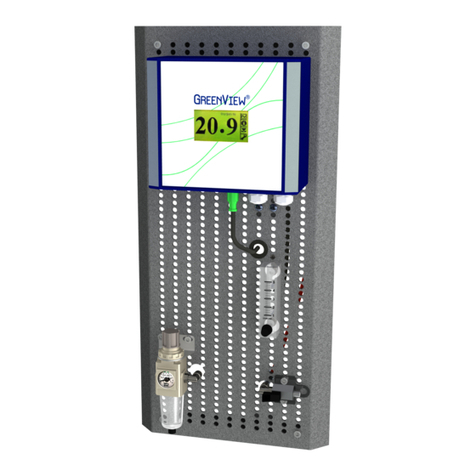
GREEN INSTRUMENTS
GREEN INSTRUMENTS G3621A/P User manual

GREEN INSTRUMENTS
GREEN INSTRUMENTS Maritime G6100 User manual
